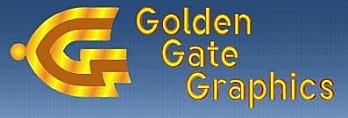
by John Walt Childers, IPC-CID, Founder of Golden Gate Graphics
Formerly known as
This glossary has key terminology in use in PCB design and manufacturing, with a smattering of electronics. The definitions were chosen so that their context would likely apply to reading material encountered by a PCB designer. Therefore, many of these terms will have other meanings not given here. See recommended dictionaries below.
This collection of terms came about as I, a PCB designer, ran across words and acronyms in my field for which meanings were hard to find. As I tracked them down, I made them part of this glossary. If you are a PCB designer, then this glossary could be a good place to start when you find a need to look up the meanings of words related to printed circuits or electronics.
XLAT XNet XMC XMII XRF xsignal XSON XYRS
XLAT — translate, trasnlation or translator
↑ Page Index
XNet — Cadence Allegro See xsignal
↑ Page Index
XMC — Switched Mezzanine Card
↑ Page Index
XMII — Cross-Wire (Two Wire Serial Management) Media Independent Interface. MII stands for Media Independent Interface, which is a component of Ethernet.
↑ Page Index
XRF — [PCB Testing] X-Ray Fluorescence is an analytical technique that determines elemental composition. XRF analysis is used to test printed circuit boards (PCB), integrated circuits (IC), and individual electronic components. It's a quick, non-destructive, highly accurate analysis that can be conducted on solids, liquids, and powders.
It works on the process of ionization, meaning that the atoms within the sample material may ionize when exposed to gamma rays or other short-wavelength x-ray beams. XRF is able to determine elemental composition by measuring the secondary x-ray beam, being the fluorescent x-ray, emitted from the tested sample when it is excited by a primary x-ray source.
XRF Analysis - Sensible Micro Corporation
↑ Page Index
xsignal — Extended signal.
Altium Designer - xSignal The capitalization of S in xSignal is a format used by Altium. In an xSignal, multiple nets can be treated as a single signal for the purpose of length matching. The simplest example is a net that starts on an IC pin, terminates on a resitor and then the signal continues from the other side of the resistor to another IC. The signal length is the first net plus the path through the resistor plus the second net. Using the xSignal mode, the designer can define this total path to be an xSignal. When there is a group of such signals, each having the pattern of IC1 pin x > resistor Rn > IC2 pin y and whose lengths need to be matched for signal integrity or high-speed design, the designer would use a design rule based on the xSignal lengths rather than the individual net lengths.
The above example is for the simplest possible situation. XSignals can wend there ways through multiple discetes and ICs. Altium Designer's xSignal wizard makes it easy to set up complex signal pathways for length matching.
In Cadence Allegro, this is called an "XNet" (extended net).
↑ Page Index
XSON — eXtremely thin Small Outline package No leads. E.G. XSON6 has 6 lands with axial symmetry with pin numbering in a dual in-line pattern.
↑ Page Index
XYRS — A file that provides numeric control for automatic component insertion.
The letters stand for:
Terms that begin with a symbol or a digit are placed in the SYMBOLS page. Terms that contain digits within them are alphabetized as if the numeric
characters were spelled in English.
Terms with two or more words are alphabetized "dictionary style." They are alphabetized as though the spaces between the terms have been removed.
If there are other characters in the term, such as a slash (/), dash (-) or plus sign (+), these are treated the same as spaces and ignored for the purpose of alphabetizing.
This is the best, most usable dictionary for electronics, because its
definitions help you grasp the terms and therefore the subject. Lesser
dictionaries define electronics terms with even more difficult technical
jargon, leading one into endless"word chains." Not this one.
You can
buy the Modern Dictionary of Electronics new or used
via the Internet.
You need a big, comprehensive dictionary. Get this one. Despite being a big dictionary, The Random House has great definitions, quick to grasp.
Although out of print, as of 2022 you could still buy a great used copy online for $40 including shipping or possibly for much less. Two versions are available of the 2nd Edition, Unabridged:
